The portrait of the Queen reproduced billions of times
 Getty Images
Getty ImagesThis article was originally published on 31 May as part of the Platinum Jubilee celebrations marking the Queen's 70 years on the throne.
Considering her face appears on billions of items of mail each year, it is perhaps not surprising that the Queen is said to take a special interest in stamps.
"When she is offered designs for Royal Mail commemorative stamps, she sees them and comments and, on occasions, she says 'no thank you' and they change them," says Peter Cockburn, president of the Royal Philatelic Society London.
Yet it is not only her appearance on pieces of post that piques her interest.
The Queen has been patron of the Royal Philatelic Society London - the world's oldest surviving organisation for the study and collection of stamps, and postal history - since 1952, keeping to a tradition within her family that has lasted for more than a century.
"She's really interested in stamps because of her grandfather," Mr Cockburn explains.
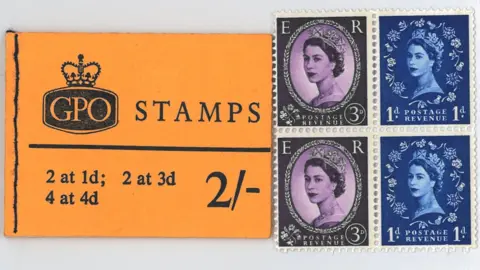
During a visit to an international philatelic exhibition organised by the society in London in 1890, Queen Victoria's second son Alfred, Duke of Edinburgh, revealed his nephew, Prince George of Wales, the Queen's grandfather and future King George V, was a stamp collector.
Six years later, George became the society's president and, when he became king in 1910, he was named patron - something which has been stuck to by all British monarchs since then.
"George V was a very fine philatelist, made a lot of collections and they are now known as the Royal Philatelic Collection. It belongs to the Queen personally, it's not part of the nation's stuff, it's her own," says Mr Cockburn.
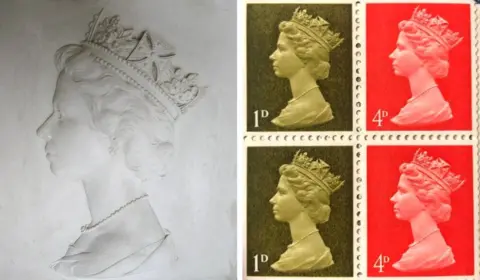 The Royal Philatelic Society London / Royal Mail
The Royal Philatelic Society London / Royal MailStamps from the Royal Collection are normally kept in Buckingham Palace but some are lent to the society to exhibit each year as part of a special arrangement with the Queen.
As patron, the monarch has also made official visits to the philatelists' headquarters during her 70-year reign.
In 1969, she helped celebrate the society's centenary, and then she dropped in again just before the pandemic began in November 2019 to open the new building - on both occasions signing the same visitors' book.
"She was wonderful," says Mr Cockburn about the most recent visit. "She has a fantastic sense of humour. When she came in the main room it was dead quiet, nobody did anything, which I thought was surprising, but she came in and said, 'it's very quiet in here!'"
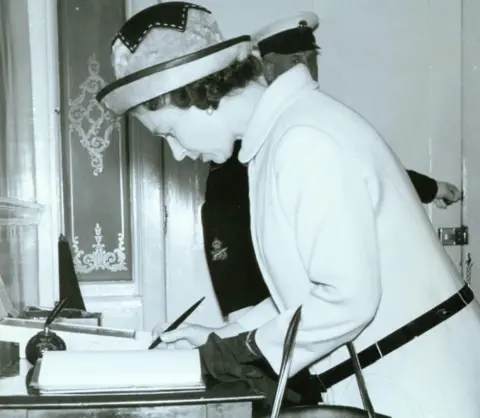 The Royal Philatelic Society London
The Royal Philatelic Society LondonDuring her 45-minute visit the Queen would have seen the society's own copy of the Machin Head - one of six large moulds created by Stoke-on-Trent artist Arnold Machin, which were then photographed and turned into the famous portrait found on the majority of British stamps since 5 June 1967.
In 2017, Royal Mail estimated the Machin portrait had been reprinted more than 220 billion times around the world in a huge variety of colours and denominations, meaning it has become its own iconic piece of art.
"It is said that this image is the most used image that the world has ever seen," Mr Cockburn says.
 Royal Mail
Royal MailYet stamp collectors will not find it on the special commemorative set issued by Royal Mail to celebrate the Platinum Jubilee because the Queen's image appears in the actual designs themselves.
Commemorative stamps have regularly been used to mark royal milestones. They have been sought after by collectors over the years but some have proved more fashionable than others.
"For the Jubilee it is natural that you have Royal Mail producing stamps, although they're probably not as popular as they used to be," Mr Cockburn said.
Royal Mail created special versions for the Queen's previous jubilees, while other places like Jersey and the Isle of Man have also produced their own, as did other parts of the Commonwealth.

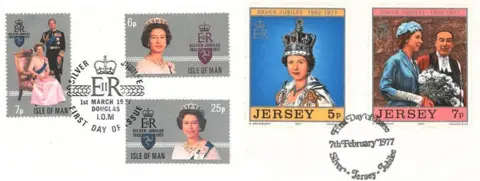 Isle of Man Post Office/Jersey Post
Isle of Man Post Office/Jersey PostAs a stamp enthusiast, the monarch's grandfather must have also been pleased to have had a commemorative set designed for his own celebration in 1935.
"The Silver Jubilee of George V was a beautiful example," says the society's president. "There were just four stamps printed, and then there was a mistake and they printed several sheets in the wrong colour - Prussian blue - and they are very rare and very expensive."
Special decorative stamps created in 1887, which coincided with Queen Victoria's Golden Jubilee, are also widely known as the Jubilee issue, even though they weren't actually produced to celebrate the occasion.
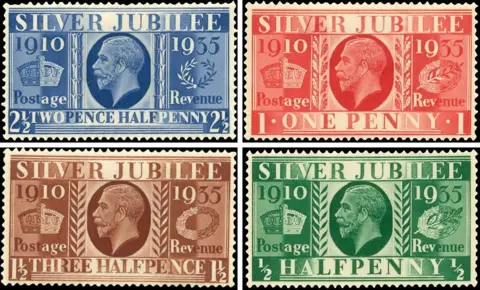 Royal Mail Group Ltd/The Postal Museum
Royal Mail Group Ltd/The Postal MuseumFor Mr Cockburn, the royal connection is not only "of great value" to the society but also highlights how important the monarchy has considered stamps since the introduction of the first - the Penny Black - in 1840.
"The royal interest in philately is still strong. The Queen came here and actually showed great interest in what we showed her - we showed her pictures of herself obviously and of her parents and grandparents," he says.
"There is a very strong link between the Royal Family and the images that they put out."
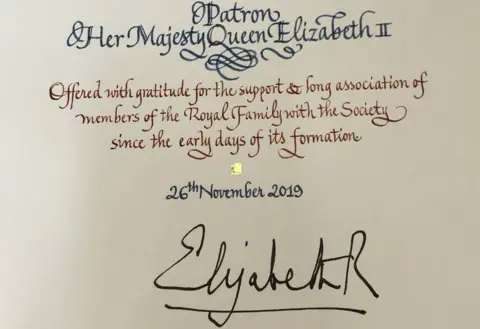

Follow BBC London on Facebook, Twitter and Instagram. Send your story ideas to [email protected]
